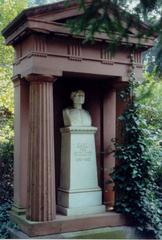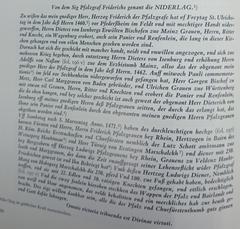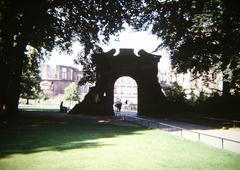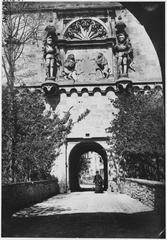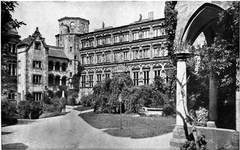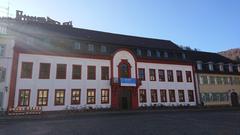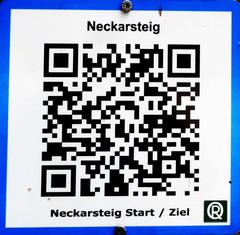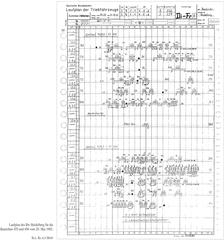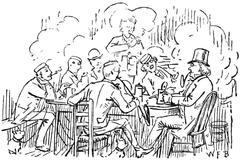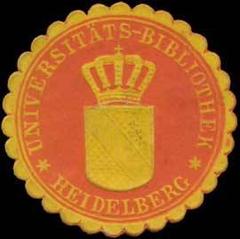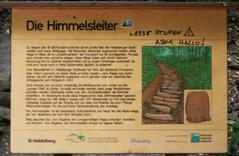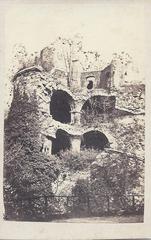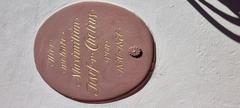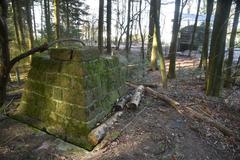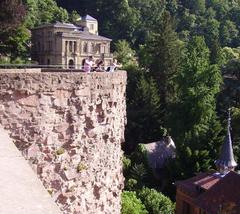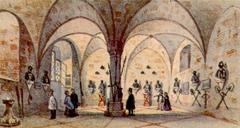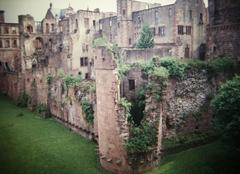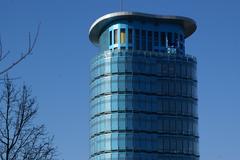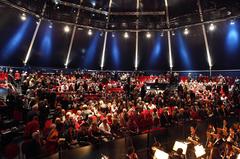
Peterskirche Heidelberg: Complete Visitor Guide, Hours, Tickets & Historical Highlights
Date: 04/07/2025
Introduction
Peterskirche (St. Peter’s Church) in Heidelberg’s Altstadt stands as the city’s oldest church and a vibrant symbol of its religious, academic, and cultural history. Evolving from its Romanesque origins in the late 12th century through Gothic, Baroque, and neo-Gothic transformations, Peterskirche is not only a place of worship but also the official university church of the University of Heidelberg. Its layered architecture, scholarly connections, and active role in community life make it one of Heidelberg’s most significant landmarks. This guide provides detailed information on Peterskirche’s history, architecture, visiting hours, ticketing, accessibility, special events, and travel tips, ensuring an enriching visit to this iconic site.
For the latest updates and schedules, always consult the official Peterskirche website and related tourism portals (heidelberg-guide.com, heidelberger-fruehling.de).
Table of Contents
- Historical Overview
- Visiting Peterskirche
- Key Features & Experience
- Nearby Attractions & Amenities
- Travel Tips
- FAQ
- Conclusion & Recommendations
- References
Historical Overview
Medieval Foundations
Peterskirche dates back to at least 1196, making it the oldest ecclesiastical building in Heidelberg—predating the city itself (de.wikipedia.org). Initially constructed as a Romanesque basilica for a small village community, it stood outside the original city walls and featured a cemetery that still exists today. The church’s earliest documented mention is linked to “plebanus Kunrad zu heidelberch.”
Role as University Church
Peterskirche’s relationship with the University of Heidelberg began soon after the university’s founding in 1386. By 1400, Elector Ruprecht III elevated the church to collegiate status. In 1896, it was designated the official university church, becoming the site for academic ceremonies and religious events for students and faculty (en.wikipedia.org).
Architectural Evolution
The church’s structure embodies centuries of stylistic change:
- Romanesque Origins: Thick walls, small windows, and a rectangular nave are remnants of the original design.
- Gothic Expansion (14th-15th centuries): Introduction of pointed arches, ribbed vaults, and larger windows, especially in the chancel.
- Baroque Reconstruction (18th century): Following war damage, Baroque elements were added.
- Neo-Gothic Remodeling (19th century): Decorative pinnacles, stained glass windows, and a reimagined façade were introduced (heidelberg-guide.com).
Religious and Civic Significance
Peterskirche played a crucial role during the Reformation, the Thirty Years’ War, and the Palatinate War of Succession, adapting to the region’s shifting religious landscape. Its cemetery contains graves of notable scholars and citizens, reflecting its importance in Heidelberg’s academic and civic memory. The church continues to host ecumenical services and interfaith dialogue events.
Visiting Peterskirche
Opening Hours
- Monday to Saturday: 10:00 AM – 6:00 PM
- Sunday & Public Holidays: 12:00 PM – 6:00 PM
Hours may vary during holidays and special events. Check the official website before visiting.
Tickets & Admission
- Entry: Free of charge. Donations are appreciated to support preservation.
- Guided Tours: Available upon request via the church or Heidelberg tourism office. Some special thematic tours may have a modest fee (heidelberger-fruehling.de).
Guided Tours & Events
- Tours: Explore the church’s architecture, stained glass, and academic history with expert guides. Audio guides may be available.
- Events: Regular concerts, lectures, and university ceremonies are held, including performances on the historic Walcker organ (Heidelberger Kirchenmusikkalender).
Accessibility
- Wheelchair Access: Step-free entrance and accessible seating.
- Restrooms: Accessible facilities are available.
- Multilingual Support: Printed materials in German and English; staff often speak English.
Photography & Visitor Conduct
- Photography: Permitted without flash or tripods; always respect services and events.
- Etiquette: Maintain a quiet, respectful demeanor; German church etiquette encourages subdued conversation (Tapped Out Travellers: German Etiquette).
Getting There
- Location: Plöck 70, 69117 Heidelberg, in the Altstadt.
- Public Transport: Easily reached by tram or bus from central Heidelberg.
- Parking: Limited in Old Town; use public transport or nearby parking garages (Heidelberg Tourist Map).
Key Features & Experience
Interior & Artistic Heritage
- Nave & Chancel: Spacious nave, ribbed Gothic vaulting, and luminous stained glass windows.
- Furnishings: Neo-Gothic pulpit, choir stalls, and altar feature intricate carvings. The Walcker organ (1885) is a highlight, recently restored for modern performances.
- Cemetery: Final resting place for scholars and prominent citizens, linking the church to Heidelberg’s intellectual legacy.
- Art & Monuments: Memorials honor theologians and academics, while stained glass illustrates biblical and scholarly themes.
Community & Academic Life
- Active Parish: Regular Protestant services, weddings, baptisms, and funerals.
- Cultural Hub: Hosts organ recitals, choral performances, and university events, fostering a vibrant intersection of sacred and secular life.
- Interfaith Dialogue: Supports peace prayers, social outreach, and intercultural programs.
Nearby Attractions & Amenities
- Heiliggeistkirche (Church of the Holy Spirit): Another historic church in the city center.
- Heidelberg Castle: Iconic fortress above Old Town.
- Alte Brücke (Old Bridge): Picturesque pedestrian bridge.
- University of Heidelberg: Old campus and university museums nearby.
- Dining & Shopping: Hauptstraße offers a range of cafes, restaurants, and boutiques (The Crazy Tourist: Heidelberg).
Travel Tips
- Best Times: Weekday mornings and late afternoons are quieter.
- Combine Visits: Add Peterskirche to an Old Town walking tour for a richer experience.
- Attend an Event: Check the concert schedule for a memorable musical experience.
- Explore the Churchyard: For insight into academic and civic history.
- Seasonal Visits: Spring and autumn provide the most pleasant weather and fewer crowds; winter is festive but colder (Heidelberg Weather Guide).
FAQ
Q: Do I need a ticket to visit Peterskirche?
A: No, admission is free; donations are welcome.
Q: What are Peterskirche’s visiting hours?
A: Generally 10:00 AM–6:00 PM (Mon–Sat), 12:00 PM–6:00 PM (Sun & Holidays), but check the official website for variations.
Q: Is it accessible for wheelchairs?
A: Yes, with step-free access and accessible facilities.
Q: Are guided tours available?
A: Yes; book via the church or tourist office.
Q: Can I attend a service or concert as a visitor?
A: Absolutely, all are welcome.
Q: Is photography allowed?
A: Yes, but without flash and with respect.
Conclusion & Recommendations
Peterskirche Heidelberg is an essential destination for anyone interested in history, architecture, or Heidelberg’s academic and spiritual traditions. Its free admission, central location, accessible facilities, and rich cultural programming make it an inviting place for reflection and exploration. Enhance your experience by attending a concert, joining a guided tour, or simply enjoying the peaceful atmosphere.
Planning Tips:
- Check official event calendars.
- Download the Audiala app for audio guides and interactive maps.
- Combine your visit with nearby historical sites for a comprehensive experience of Heidelberg’s heritage.
References
- Peterskirche Heidelberg: A Historic Landmark and Vibrant University Church - Visiting Hours, Tickets, and Visitor Guide, 2025 (peterskirche-heidelberg.de)
- St. Peter’s Church, Heidelberg - Wikipedia, 2025 (en.wikipedia.org)
- Peterskirche Heidelberg - Heidelberg Guide, 2025 (heidelberg-guide.com)
- Heidelberger Frühling - Peterskirche, 2025 (heidelberger-fruehling.de)
- Heidelberg Interactive - Die Peterskirche, 2025 (heidelberg-interaktiv.de)
- Heidelberg Tourism Official Page, 2025 (heidelberg-marketing.de)
- Heidelberg Tourist Map and Attractions Guide, 2025 (touristplaces.guide)
- Tapped Out Travellers: German Etiquette (tappedouttravellers.com)
- The Crazy Tourist: Heidelberg (thecrazytourist.com)
- Wanderlog: Peterskirche (wanderlog.com)






